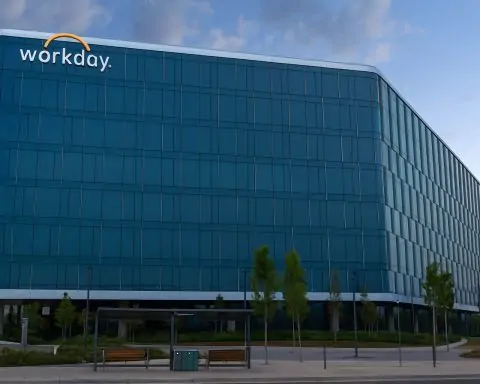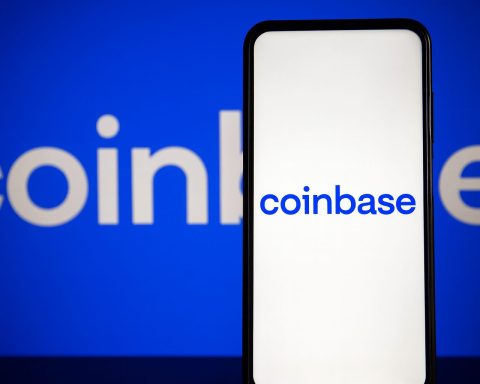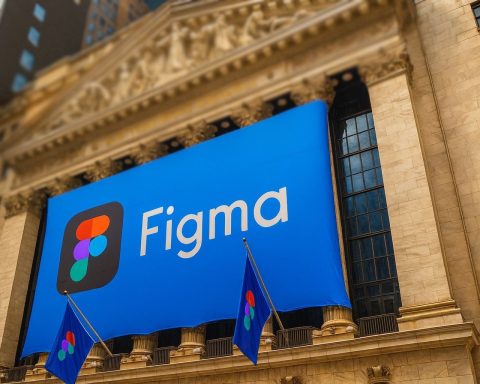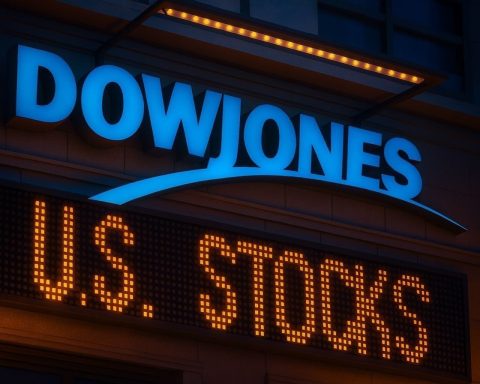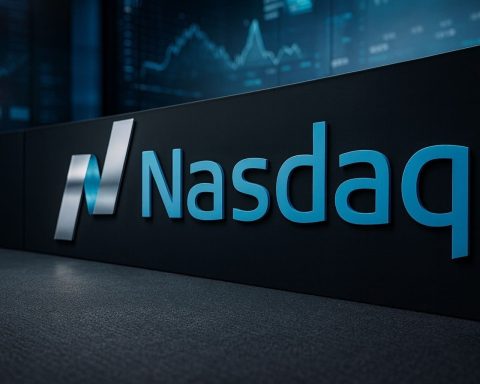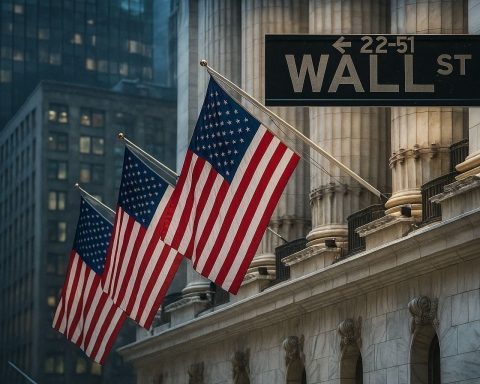Published November 28, 2025
Sears, once America’s largest and most influential retailer, is entering Black Friday 2025 with only five full-line department stores left in the United States. Fresh reporting from CNN Business and new industry analysis suggest this holiday shopping season could realistically be the last for the 132‑year‑old brand as a meaningful brick‑and‑mortar retailer. [1]
At its peak, Sears operated thousands of locations and helped define suburban malls, middle‑class lifestyles, and even the modern credit card. Today, it’s a near‑ghost presence in U.S. retail — a symbolic survivor of a model that never fully adapted to e‑commerce, data‑driven marketing, or the new, inflation‑shaped consumer mindset. [2]
As shoppers fan out for Black Friday doorbusters and online lightning deals, the question hanging over this year’s holiday rush is blunt: Is this truly Sears’ last Black Friday?
From Catalog Trailblazer to Black Friday Footnote
Sears began in the late 19th century as a mail‑order business, shipping watches and then a vast range of goods into rural homes via a thick paper catalog. By the mid‑20th century it had become the largest retailer and one of the largest employers in the United States, anchoring malls, shaping suburbs, and building out famous in‑house brands such as Kenmore appliances, Craftsman tools, and DieHard batteries. [3]
The company’s ambition stretched far beyond selling washing machines and lawnmowers. Sears:
- Built what is now the Willis Tower in Chicago as its headquarters in the 1970s
- Created Allstate Insurance and owned major financial and real‑estate firms
- Helped launch early online services like Prodigy and the Discover credit card [4]
For decades, Sears was the template: the everything‑store before Amazon, the mall anchor before experiential retail, the brand that seemed too big to fail. That aura has now evaporated.
Only Five Sears Stores Left — and One Is Already Marked for Redevelopment
According to CNN’s reporting, Sears’ footprint has collapsed from roughly 2,000 stores about 20 years ago, and more than 200 when it emerged from bankruptcy in 2019, to just five locations in late 2025. [5]
Those remaining stores are:
- Coral Gables, Florida – a standalone site where local plans would replace the store with about 1,000 housing units, a clear sign the land may be worth more than the store. [6]
- Braintree, Massachusetts – mall anchor
- Concord, California – mall anchor
- El Paso, Texas – mall anchor
- Orlando, Florida – mall anchor
The four mall‑based stores all sit in properties owned by Simon Property Group, the largest U.S. mall operator, which underlines that any decision about Sears’ physical survival is now as much a real‑estate question as a retail one. [7]
Outside the mainland, the last Sears in Puerto Rico closed on August 31, 2025, leaving these five U.S. stores and the company’s e‑commerce site, Sears.com, as the final remnants of a once‑sprawling empire. [8]
Neither Sears’ current owner (Transformco) nor Simon Property Group has commented publicly on what happens to the remaining locations after this holiday season, CNN notes. [9]
Analysts: The Remaining Sears Stores Are “Phantoms” With No Path to Profit
The picture painted by retail experts is grim. In interviews with CNN, longtime industry watchers say there is effectively no realistic scenario in which these last Sears stores are profitable. [10]
Neil Saunders of GlobalData points out that Sears struggled to make money even when it had much greater scale and buying power; the idea that a tiny, scattered fleet of stores could suddenly turn profitable is, in his words, fantasy. Mark Cohen, former head of Sears Canada and now a Columbia University professor, describes the remaining outlets as little more than hollow shells, opened and closed each day with limited merchandise and minimal customer traffic. [11]
Both analysts suggest there are only a few plausible reasons the doors are still open at all:
- Tax and accounting – Keeping loss‑making stores operating may allow owner Eddie Lampert and Transformco to book tax losses.
- Leases and legal obligations – Breaking long‑term mall leases can be complicated and costly, encouraging landlords and owners to keep stores limping along until redevelopment plans are ready. [12]
Crucially, neither expert sees a credible growth strategy in place. From their perspective, Sears is in a controlled decline, not a turnaround.
Black Friday 2025: A Tougher Backdrop for Legacy Retailers
Sears’ precarious situation is playing out against a very different Black Friday landscape than the one it once dominated.
Shoppers Are Out — But Spending More Carefully
The National Retail Federation (NRF) expects total U.S. holiday retail sales in November and December 2025 to top $1 trillion for the first time, with growth of 3.7% to 4.2% over 2024. [13]
That sounds healthy, but a closer look shows a more challenging picture for traditional chains:
- NRF forecasts a record 186.9 million people shopping from Thanksgiving through Cyber Monday. [14]
- Yet Reuters reports that average spending per shopper is expected to fall — down to around $890 from about $902 last year, reflecting inflation, weak job growth and shakier consumer confidence. [15]
- More of that spending is flowing online, with digital sales over the Black Friday weekend projected to rise mid‑single digits and total nearly $80 billion, according to multiple analyst estimates. [16]
WebProNews, in its own analysis of Sears’ predicament, points to social‑media sentiment suggesting roughly two‑thirds of U.S. consumers are prioritizing essentials over discretionary splurges this year. It also highlights forecasts that seasonal retail hiring in 2025 will be the weakest in about 15 years, with retailers adding between 265,000 and 365,000 workers — far below last year’s 442,000. [17]
In short: people are still shopping, but they’re buying less, earlier, and more carefully, and they’re increasingly doing it online — a combination that disadvantages legacy department stores already on the brink.
How Sears Fell Behind: Real Estate Plays, Not Retail Reinvention
Sears’ current crisis didn’t begin with online shopping or inflation. It’s the culmination of years of strategic choices that sacrificed long‑term competitiveness for short‑term financial engineering.
Key decisions on the road down include:
- 2005 merger with Kmart – Hedge fund manager Eddie Lampert combined Sears and Kmart to form Sears Holdings, with about 3,500 U.S. stores and more than 300,000 employees at the time. [18]
- Asset sales and buybacks – Instead of investing heavily in store upgrades, technology, and logistics, the merged company focused on selling prime real estate and repurchasing its own stock to support the share price. [19]
- Bankruptcy and shrink‑to‑survive – By 2018, Sears Holdings filed for Chapter 11. The company that emerged under Transformco in early 2019 still had 223 Sears and 202 Kmart stores — but closures accelerated, and the last full‑line Kmart in the continental U.S. shut its doors about a year ago. [20]
Along the way, Sears sold or spun off many of its crown‑jewel assets:
- Craftsman tools were sold to Stanley Black & Decker in 2017 in a deal valued at about $900 million. [21]
- The DieHard battery brand was sold to Advance Auto Parts in 2019 for $200 million, though Transformco retained some licensing rights. [22]
Those transactions brought in badly needed cash but stripped Sears of differentiating brands that once made the store a default stop for tools, auto parts, and appliances.
Even as competitors poured money into omnichannel strategies — buy‑online‑pick‑up‑in‑store, curbside fulfillment, app‑based loyalty programs — Sears stumbled. WebProNews notes that while Sears.com remains up and running, its digital experience lacks the personalization, speed and seamless integration that shoppers now expect from leaders like Amazon, Walmart, and Target. [23]
Sears’ Black Friday 2025: More Last Stand Than Fresh Start
In this year’s sales circulars, Sears is leaning on familiar categories: appliances, tools, and home essentials, the very segments where it once dominated. WebProNews describes the chain’s Black Friday promotions as heavy on discounts — but more reminiscent of liquidation‑style clearing than a high‑energy growth push. [24]
The problem is that the rest of the market has moved on:
- Fast‑fashion player Zara is offering around 40% markdowns on popular outerwear and apparel, drawing younger shoppers with on‑trend products. [25]
- Big‑box giants kicked off Black Friday deals in mid‑November, diluting the impact of any one weekend and rewarding retailers that can sustain aggressive pricing for weeks, not days. [26]
- Online, deep‑discount electronics, gaming bundles and brand‑name beauty products dominate social feeds and deal sites — categories where Sears has little visibility left. [27]
For shoppers who still wander into a Sears store this weekend, the experience will likely feel frozen in time: aging fixtures, sparse shelves, and pockets of outdated inventory. Analysts say that even steep markdowns may not be enough to overcome the perception that there’s simply not much worth buying there anymore. [28]
What Happens Next: Real Estate, Data Centers and Digital Ghosts
If this holiday season doesn’t produce a miracle — and no expert is expecting one — Sears’ next chapter will play out as much on zoning commission agendas as on shopping receipts.
Several developments already point the way:
- In Coral Gables, plans to raze the standalone Sears store and replace it with roughly 1,000 housing units illustrate how valuable urban and suburban land has become relative to big‑box retail. [29]
- At the company’s former headquarters campus in Hoffman Estates, Illinois, demolition began in 2024 to make room for data centers — a stark visual of physical retail square footage being repurposed to power the digital economy that helped displace it. [30]
- In malls where Sears is still an anchor, landlords have already been experimenting for years with alternative uses for large boxes: entertainment complexes, medical facilities, gyms, offices, even grocery stores and schools. A vacant Sears gives them a clean slate to accelerate those plans. [31]
Even if the stores vanish, the Sears brand itself may not disappear overnight. The Sears.com website still operates, and Transformco retains various brand and licensing rights that could, in theory, be sold, sublicensed or relaunched as part of a smaller digital‑only model. [32]
Whether consumers would care is another question entirely.
A Warning for the Rest of Retail
If Black Friday 2025 does prove to be Sears’ last, its fall will stand as one of retail’s clearest cautionary tales.
Commentary from retail professionals reacting to the CNN story on LinkedIn argues that Sears didn’t fail because shoppers stopped wanting appliances or tools; it failed because leadership didn’t rebuild the business around changing customer behavior — modern e‑commerce, faster fulfillment, better inventory and data‑driven merchandising — while competitors did. [33]
At the same time, Sears is far from the only big name under pressure:
- Chains like Kohl’s have announced store closures in multiple states, citing underperformance in certain locations. [34]
- Furniture brands American Signature and Value City Furniture are closing stores amid bankruptcy restructurings. [35]
- Drugstores and mall specialty chains — from Rite Aid to Claire’s — have also shuttered significant numbers of locations over the past year. [36]
The broader trend: a retail landscape where physical space has to justify itself, either as an experience center fully integrated with digital or as a property that can be profitably repurposed. Stores that simply exist as big boxes of undifferentiated inventory are increasingly unsustainable. [37]
So Is This Really Sears’ Last Black Friday?
No one at Sears or its owner Transformco has officially said “this is the end.” There’s no formal closure announcement, no final‑season marketing campaign, no public timeline. [38]
But when you stack up the evidence — the five remaining stores, the redevelopment plans, the expert consensus that the outlets aren’t profitable, the brand’s stripped‑down asset base, and the unforgiving 2025 retail environment — it’s difficult to see a path in which Sears emerges from this holiday season stronger than it entered.
More likely, Black Friday 2025 will be remembered as Sears’ final stand: a last, faint echo of a retailer that once set the pace for how Americans shopped, lived, and built their homes — and that ultimately became a case study in what happens when a giant stops evolving.
For shoppers strolling through those last Sears stores this weekend, every trip down the tool aisle or appliance row may be more than a bargain hunt. It may be a farewell tour.
References
1. ktvz.com, 2. en.wikipedia.org, 3. en.wikipedia.org, 4. ktvz.com, 5. ktvz.com, 6. ktvz.com, 7. ktvz.com, 8. en.wikipedia.org, 9. ktvz.com, 10. ktvz.com, 11. ktvz.com, 12. ktvz.com, 13. nrf.com, 14. www.reuters.com, 15. www.reuters.com, 16. www.ft.com, 17. www.webpronews.com, 18. ktvz.com, 19. ktvz.com, 20. ktvz.com, 21. www.bloomberg.com, 22. ir.advanceautoparts.com, 23. www.webpronews.com, 24. www.webpronews.com, 25. www.webpronews.com, 26. www.ksl.com, 27. www.reuters.com, 28. ktvz.com, 29. ktvz.com, 30. en.wikipedia.org, 31. www.webpronews.com, 32. en.wikipedia.org, 33. www.linkedin.com, 34. www.aol.com, 35. www.aol.com, 36. www.aol.com, 37. www.reuters.com, 38. ktvz.com
